Related Research Articles
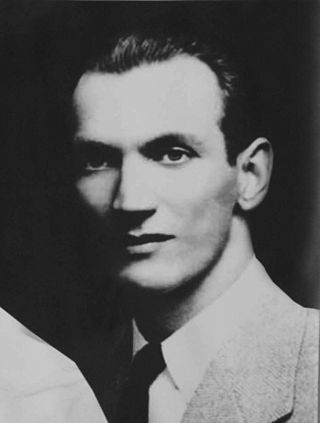
Jan Karski was a Polish soldier, resistance-fighter, and diplomat during World War II. He is known for having acted as a courier in 1940–1943 to the Polish government-in-exile and to Poland's Western Allies about the situation in German-occupied Poland. He reported about the state of Poland, its many competing resistance factions, and also about Germany's destruction of the Warsaw Ghetto and its operation of extermination camps on Polish soil that were murdering Jews, Poles, and others.

Bruno Schulz was a Polish Jewish writer, fine artist, literary critic and art teacher. He is regarded as one of the great Polish-language prose stylists of the 20th century. In 1938, he was awarded the Polish Academy of Literature's prestigious Golden Laurel award. Several of Schulz's works were lost in the Holocaust, including short stories from the early 1940s and his final, unfinished novel The Messiah. Schulz was shot and killed by a Gestapo officer, in 1942 while walking back home toward Drohobycz Ghetto with a loaf of bread.

Drohobych is a city of regional significance in Lviv Oblast, Ukraine. It is the administrative center of Drohobych Raion and hosts the administration of Drohobych urban hromada, one of the hromadas of Ukraine. In 1939–1941 and 1944–1959 it was the center of Drohobych Oblast.

Irena Stanisława Sendler, also referred to as Irena Sendlerowa in Poland, nom de guerreJolanta, was a Polish humanitarian, social worker, and nurse who served in the Polish Underground Resistance during World War II in German-occupied Warsaw. From October 1943 she was head of the children's section of Żegota, the Polish Council to Aid Jews.

The Kindertransport was an organised rescue effort of children from Nazi-controlled territory that took place in 1938-1939 during the nine months prior to the outbreak of the Second World War. The United Kingdom took in nearly 10,000 children, most of them Jewish, from Germany, Austria, Czechoslovakia, Poland, and the Free City of Danzig. The children were placed in British foster homes, hostels, schools, and farms. Often they were the only members of their families who survived the Holocaust. The programme was supported, publicised, and encouraged by the British government, which waived the visa immigration requirements that were not within the ability of the British Jewish community to fulfil. The British government placed no numerical limit on the programme; it was the start of the Second World War that brought it to an end, by which time about 10,000 kindertransport children had been brought to the country.

This is a selected bibliography and other resources for The Holocaust, including prominent primary sources, historical studies, notable survivor accounts and autobiographies, as well as other documentation and further hypotheses.
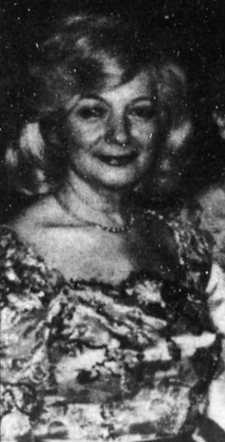
Zahava Burack was a Jewish Holocaust survivor from Poland who went on to become a well-known philanthropist, community leader and political activist in the United States. During her childhood, she survived the Holocaust by hiding with her family in a crawlspace beneath the home of a Polish Catholic family for two and a half years. After the liberation of occupied Poland in 1945, she was smuggled to Israel, where she lived for twelve years, two of which she spent serving with the Haganah paramilitary organization. In 1958, Burack moved to the United States, where she worked with both American and Israeli politicians for Jewish causes.
The Holocaust has been a prominent subject of art and literature throughout the second half of the twentieth century. There is a wide range of ways–including dance, film, literature, music, and television–in which the Holocaust has been represented in the arts and popular culture.

Irene Gut Opdyke was a Polish nurse who gained international recognition for aiding Polish Jews persecuted by Nazi Germany during World War II. She was honored as a Righteous Among the Nations by Yad Vashem for risking her life to save twelve Jews from certain death.
Alicia Appleman-Jurman, also known as Alicia Ada Appleman, was a Polish–American memoirist, born in Rosulna, Poland, who has written and spoken about her experiences of the Holocaust in her autobiography, Alicia: My Story.

Holocaust survivors are people who survived the Holocaust, defined as the persecution and attempted annihilation of the Jews by Nazi Germany and its allies before and during World War II in Europe and North Africa. There is no universally accepted definition of the term, and it has been applied variously to Jews who survived the war in German-occupied Europe or other Axis territories, as well as to those who fled to Allied and neutral countries before or during the war. In some cases, non-Jews who also experienced collective persecution under the Nazi regime are considered Holocaust survivors as well. The definition has evolved over time.
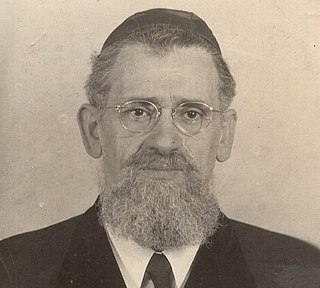
Rabbi Dr. Yaakov Avigdor was a Polish-Mexican rabbi, author and Holocaust survivor. Prior to the Holocaust he served as Chief Rabbi of Drohobych - Boryslav in Poland, and after the war, as rabbi of the Ashkenazi community in Mexico.
Irene Tomaszewski is a Canadian writer, editor and translator of Polish descent living in Montreal, Canada.

Henryk Grynberg is a Polish writer and actor who survived the Nazi occupation. He is a novelist, short-story writer, poet, playwright and essayist who had authored more than thirty books of prose and poetry and two dramas. Grynberg, known as the “chronicler of the fate of the Polish Jews”, tackled in his writings the Holocaust experience and the post-Holocaust trauma.
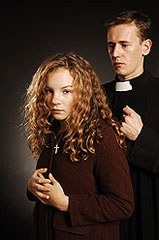
Hanuszka is a 2006 film by Nurit Kedar that tells the true story of a Jewish girl who survived the Holocaust in a convent, where she got to know Pope John Paul II. The film blends documentary and narrative elements to tell the atypical story of how Hanna Mandelberger escaped the Warsaw Ghetto.

Nava Semel was an Israeli author, playwright, screenwriter and translator. Her short story collection Kova Zekhukhit was the first work of fiction published in Israel to address the topic of the "Second Generation"—children of Holocaust survivors.
Eva Fogelman is an American psychologist, writer, filmmaker and a pioneer in the treatment of psychological effects of the Holocaust on survivors and their descendants. She is the author of the Pulitzer Prize nominated book Conscience and Courage: Rescuers of Jews During the Holocaust and co-editor of Children During the Nazi Reign: Psychological Perspectives on the Interview Process. She is the writer and co-producer of the award-winning documentary Breaking the Silence: the Generation After the Holocaust and co-author of Children in the Holocaust and Its Aftermath: Historical and Psychological Studies of the Kestenberg Archive (2019).
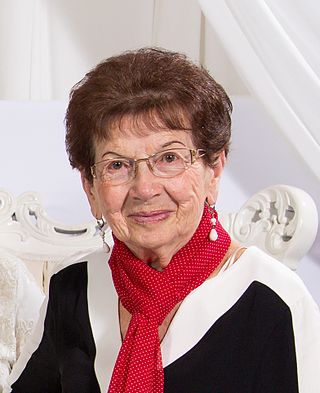
Bat-Sheva Dagan is a Polish-Israeli Holocaust survivor, educator, author, and speaker. Born in Łódź, Poland, she was incarcerated in a ghetto in Radom with her parents and two sisters in 1940. After her parents and a sister were deported and murdered in Treblinka in August 1942, she escaped to Germany, but was discovered, imprisoned, and deported to Auschwitz in May 1943. After spending 20 months in Auschwitz, she survived two death marches and was liberated by British troops in May 1945. She was the only survivor of her family. She and her husband settled in Israel, where she taught kindergarten and later obtained degrees in educational counseling and psychology. She went on to author books, poems, and songs for children and young adults on Holocaust themes, and developed psychological and pedagogical methods for teaching the Holocaust to children. She is considered a pioneer in children's Holocaust education.
Renia Spiegel was a Jewish Polish diarist who was killed during World War II in the Holocaust.
Nelly Toll was a Polish-born American Jewish artist, writer, and teacher, and was a survivor of the Holocaust. Toll, and her mother Rose, were the only members of their family to survive the Holocaust, and spent over eighteen months in hiding during 1943 and 1944. Toll's childhood water color paintings, in which she recorded her experiences of the Holocaust form a significant record of the period. They are archived in museums in the United States and Israel, and have been exhibited internationally, as well as being recorded in the form of a book by Toll. As an adult, Toll immigrated to the United States and settled there, teaching art and the history of the Holocaust at the University of Pennsylvania Graduate School of Education.